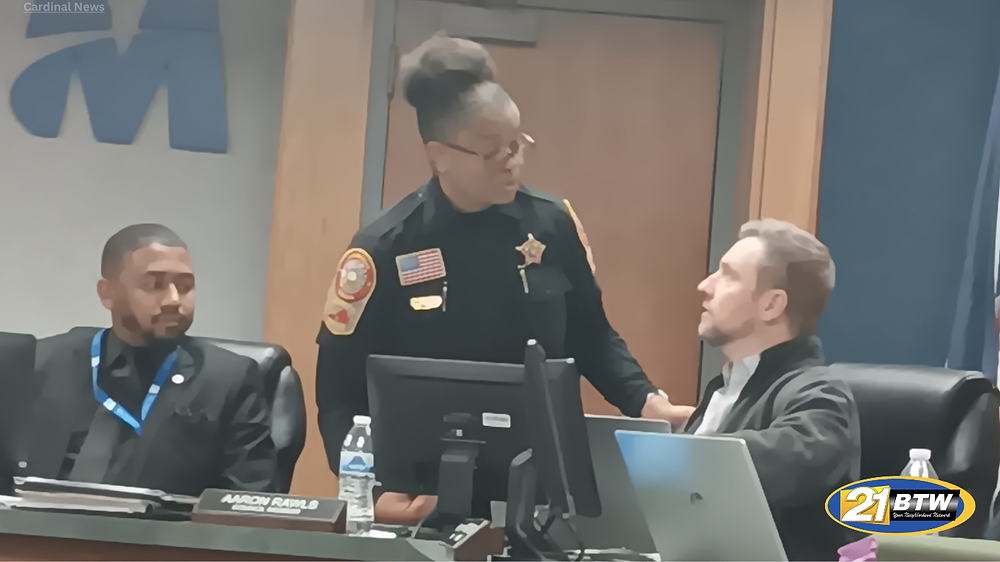
Duane Morris Takeaway: This week’s
episode of the Class Action Weekly Wire features Duane Morris
partner Jennifer Riley and associate Nathan Norimoto with their
analysis of key procedural issues in class action litigation
addressed by the Second, Third, and Seventh Circuit Courts.
Check out today’s episode and subscribe to our show from
your preferred podcast platform: Spotify, Amazon Music, Apple PodcastsSamsung Podcasts, Podcast Index, Tune In, Listen Notes, IHEARTRODO, Deezerand YouTube.
self
Episode Transcript
Jennifer Riley: Thank you for being here again
for the next episode of our Friday weekly podcast, the Class Action
Weekly Wire. I’m Jennifer, Riley, partner at Duane Morris, and
joining me today is Nathan Norimoto. Thank you so much for being on
the podcast today, Nathan.
Nathan Norimoto: Thanks. Happy to be here
again, Jen. I appreciate it.
Jennifer: So, today we wanted to discuss trends
and important developments with procedural issues in class action
litigation. In our Class Action Review, this topic is somewhat of a
catch-all in terms of the legal issues involved. Class action
litigation presents significant procedural issues to litigants and
courts alike. In 2024 courts addressed myriad procedural issues in
class action litigation. Nathan, can you tell our listeners some of
the highlights in this area over the past year?
Nathan: Certainly, jurisdiction is always an
important consideration in class action litigation. Jurisdictional
defenses are often can be dispositive when a defendant challenges
the ability of plaintiffs to maintain their class action in court.
This past year, the plaintiffs in Hasson v. FullStory,
Inc. challenged district court decisions dismissing their
class action lawsuits against FullStory, Inc., one of the
defendants, and also Papa John’s International, Inc., for lack
of personal jurisdiction, and essentially in their complaint
plaintiffs allege that they were being unlawfully wiretapped by the
defendants without their consent. Both of the defendants were
incorporated in Delaware and based in Georgia, and the core legal
issue that was presented in both cases centered on whether the
defendants’ actions constituted sufficient contact with
Pennsylvania to warrant jurisdiction from the court. The district
court ruled against the plaintiffs on the grounds that they had
failed to show that FullStory, one of the defendants, specifically
aimed its conduct at Pennsylvania, where the action was venue. The
district court also found that the claims were inadequate under
both the “traditional” and “effects” tests for
establishing personal jurisdiction. This decision from the district
court was appealed to the Third Circuit, which ultimately affirmed
the district court’s ruling. The Third Circuit ruled that the
plaintiff’s allegations had failed to show that one of the one
of the defendants, Papa John’s, targeted Pennsylvania
specifically as the company’s website was intended for a
national audience. The Court of Appeals also held that just simply
operating an accessible website does not equate to targeting a
specific state for purposes of the personal jurisdiction analysis.
Additionally, the Third Circuit rejected one of the plaintiffs’
arguments that Papa Johns’ business activities in Pennsylvania
established sufficient jurisdiction, analyzing that the alleged
wiretapping would have occurred regardless of the company’s
operations in that state. The court acknowledged Papa Johns’
significant presence in Pennsylvania but found that the
plaintiffs’ claims did not arise out of or relate sufficiently
to those contacts. So, ultimately the Third Circuit ruled that the
connection between the website’s operation and the wiretapping
claims was too weak to satisfy jurisdictional requirements as to
the other plaintiff’s claims. The Third Circuit ruled that the
plaintiff did not allege that FullStory, the other defendant, knew
that he or any other user was in Pennsylvania before this alleged
wiretapping app application was dispatched to his browser. The
court held that FullStory was a degree removed from the alleged
harm in the chain of events preceding this application’s
transmission to the plaintiff’s browser failed to establish
that FullStory, the defendant, expressly aimed its alleged
wiretapping at Pennsylvania. So, for these reasons, the Third
Circuit affirmed the district court’s ruling dismissing the
case.
Jennifer: Thanks, Nathan. The issue of standing
is always also a hot topic in class action litigation. For
instance, I know the Second Circuit weighed in on associational
standing in a case called Do No Harm, et al. v. Pfizer
Inc. this past year. So, associational standing is a legal
doctrine that allows an organization to sue on behalf of its
members when those members have suffered injury, even if the
organization itself hasn’t experienced harm. Essentially, it
gives an organization the right to act as a representative of its
members in court. So, in that case the defendant was Pfizer. It
launched a program called the Breakthrough Fellowship Program in
2021 to increase minority representation and leadership
opportunities. The program included a summer internship, two years
of full-time employment, a fully paid MBA, MPH, or MS degree,
additional internships, and postgraduate employment with Pfizer,
the defendant. Eligibility for the program was restricted to the
U.S. citizens or permanent residents who were undergraduate juniors
with 3.0 GPAs and who exhibited commitment to pursuing one of those
degrees, and it specifically aimed to enhance opportunities for
Black/African American, Latino/Hispanic, and Native American
candidates. The plaintiff in that case was an advocacy organization
and filed a lawsuit claiming that the fellowship’s focus on
increasing diversity excluded White and Asian American applicants
in violation of Title VII. The organizations sought a temporary
restraining order, or TRO, to halt the selection process for 2023.
The district court in that one dismissed the case, ruling that the
plaintiff, the association, lacked standing because it failed to
identify any harmed members by name, and also did not sufficiently
demonstrate that its members were directly affected. The district
court there opined also that the fellowship program did not violate
the federal civil rights laws. On appeal, the Second Circuit
affirmed the ruling of the district court. The plaintiff argued
that the dismissal was premature because it had met the standing
requirements for a preliminary injunction. The Second Circuit
disagreed. It ruled that the plaintiff, who was of course pursuing
claims as an association, had to name at least one injured member
in order to establish standing, and therefore the dismissal was
appropriate because the plaintiff failed to meet that
requirement.
Nathan: Interesting. I’m interested to see
how that doctrine progresses through 2025. Jen, I also wanted to
address the issue of consolidation and class action litigation,
since oftentimes consolidation issues surface when defendants are
subject to multiple class actions and are assessing whether or not
to consolidate multiple cases in one form is a strategic imperative
for defendants. In Willis, et al. v. Government Employees
Insurance Co., the plaintiffs filed a collective action
alleging that GEICO had failed to pay overtime wages under the Fair
Labor Standards Act, or the FLSA. The case was connected to two
other FLSA collective actions against GEICO already pending in that
court and the defendant, GEICO, had sought a dismissal of the case
as duplicative since the named plaintiffs were also part of another
lawsuit entitled Benvenutti v. Geic. The court denied the
motion and ultimately consolidated the actions, stating that the
Benvenutti action specifically involved service
representatives at GEICO’s operation working out of its Macon,
Georgia call center, and had alleged that GEICO failed to pay
overtime under a policy that had only compensated logged in hours.
The current plaintiffs, while also part of the Benvenutti
case, represented employees in different positions who had similar
claims regarding unpaid hours worked. The court noted that there
was a substantial overlap in the parties’ issues and relief
sought between the two cases, emphasizing that both actions
revolved around claims of unpaid overtime under these alleged
timekeeping practices. And so, the court ruled that consolidating
the cases would actually enhance judicial efficiency and avoid
repetitive litigation to provide a more streamlined resolution of
the common issues.
Jennifer: Thanks, Nathan. Agreed –
centralization is key for parties when attempting to litigate the
claims of several actions in a particular forum. So, let’s talk
about one more topic, and one that is always interesting in terms
of how courts rule – sanctions, sanctions in class action
litigation. Were there any interesting rulings on sanctions in
2024?
Nathan: Definitely. One interesting sanctions
case was Mazurek, et al. v. Metalcraft Of Mayville, Inc.
The plaintiff machinist had filed a collective action alleging that
the defendant had failed to pay overtime compensation in violation
of again the FLSA. The plaintiff specifically asserted that the
defendant’s timekeeping system allowed employees to clock in
and out up to 15 minutes before and after their scheduled shifts.
However, the plaintiff alleged that if employees clocked in early
but didn’t ultimately end up working that time, the recorded
start time was adjusted to reflect the regular shift start time
that was already programmed in the system. The plaintiff claimed
employees were not compensated for this early time, despite them
working. So, a timeclock issue. The court initially granted
conditional certification of the collective action, but after
discovery it subsequently decertified the collective action. The
plaintiffs, following that decertification ruling, filed 16
additional cases which the court moved to consolidate or
consolidated, and then the court selected two cases for summary
judgment briefing. Out of those 16, the court had granted summary
judgment to the defendant in all the selected cases. It ruled that
even though the FLSA plaintiffs have a lower burden of proof when
employer records are inaccurate. For example, the plaintiffs must
still provide some proof of the hours they worked and were not
compensated for that time. And so, the court noted that
reconstructed work time had to be more than mere guesswork and
found that plaintiffs’ attempts to estimate their work hours
were just insufficient. So, in a separate order, in addition to
that motion for summary judgment order, the court noted that since
the two selected cases shared similar issues, it might be
indicative of the broader problem with all of the pending cases.
The court instructed plaintiffs’ counsel to then provide any
specific facts or legal arguments that could differentiate the
remaining cases from the two that have already been decided. In
response, the plaintiffs in the remaining cases voluntarily
dismissed their complaints with prejudice. Given the court’s
ruling and the other actions, the defendant then moved for
sanctions across all 16 cases, arguing that the allegations were
based on speculation rather than evidence, and that plaintiffs’
counsel should have realized the cases were baseless when they
filed the complaints. The district court ultimately denied the
sanctions motion finding that while the evidence provided by the
plaintiffs was insufficient to win at summary judgment, it still
didn’t rise to the level of frivolousness or baselessness to
warrant sanctions. Defendants appealed, and on appeal, the Seventh
Circuit affirmed the district court’s ruling, agreeing that the
plaintiffs’ claims were based on legitimate legal arguments and
methods of proof and also, of course, that the district court had
not abused its discretion denying that motion for sanctions.
Jennifer: Thanks, Nathan, great insights and
analysis. I know that these are only some of the manners in which
procedural issues can and have impacted and shaped class action
litigation. I expect the ways in which both sides utilize these
procedural tools, and the manner in which the courts rule on their
applications, will continue to evolve in 2025. Thanks so much for
joining us today. And thank you, Nathan, for your insight and
excellent analysis.
Nathan: Thank you, listeners. Thank you,
Jen.
Disclaimer: This Alert has been
prepared and published for informational purposes only and is not
offered, nor should be construed, as legal advice. For more
information, please see the firm’s full disclaimer.



